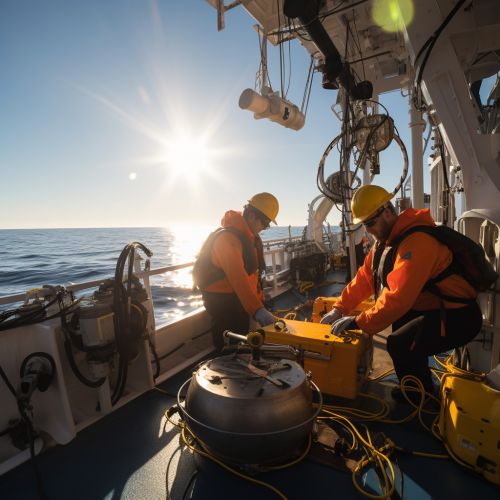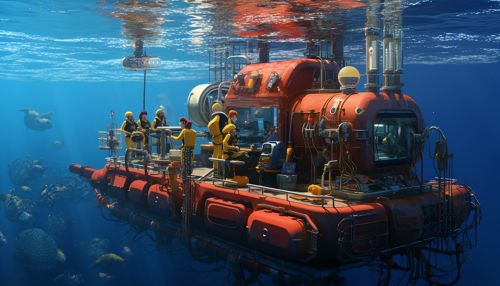Oceanographic Data Collection
Introduction
Oceanographic data collection is a critical aspect of oceanographic studies, involving the systematic gathering and analysis of data related to the physical, chemical, and biological properties of the ocean. This data is vital for understanding the complex processes occurring within the world's oceans and for predicting future oceanic conditions.


Historical Overview
The collection of oceanographic data has a long history, dating back to the early explorations of the sea. Early sailors and explorers would make rudimentary measurements of the ocean's properties, such as temperature and salinity, using simple tools and techniques. However, it was not until the late 19th and early 20th centuries, with the advent of the Challenger and Meteor expeditions, that oceanographic data collection became a more systematic and scientific endeavor.
Modern Techniques and Instruments
Modern oceanographic data collection employs a variety of sophisticated techniques and instruments. These include:
Conductivity, Temperature, and Depth (CTD) Sensors
CTD sensors are the primary tools for determining essential physical properties of sea water. They measure conductivity (to determine salinity), temperature, and depth. The sensors are often deployed from research vessels and can be used to create detailed profiles of the ocean's properties.
Acoustic Doppler Current Profilers (ADCP)
ADCPs are used to measure ocean currents. These instruments use the Doppler effect of sound waves to determine the speed and direction of water movement.
Remote Sensing
Remote sensing techniques involve the use of satellites or aircraft to collect data about the ocean's surface. These techniques can provide data on a range of properties, including sea surface temperature, wave height, and ocean color (which can indicate the presence of phytoplankton).
Autonomous Underwater Vehicles (AUVs)
AUVs are unmanned, programmable instruments that can be used to collect data in areas of the ocean that are difficult to reach with traditional methods. They can be equipped with a variety of sensors and instruments to collect data on a range of oceanographic properties.
Data Analysis and Interpretation
Once collected, oceanographic data must be carefully analyzed and interpreted. This often involves the use of complex mathematical and statistical techniques, as well as computer models. The goal of this analysis is to understand the processes occurring within the ocean and to make predictions about future conditions.
Applications of Oceanographic Data
The data collected through oceanographic studies has a wide range of applications. These include:
Climate Studies
Oceanographic data is crucial for understanding the role of the oceans in the Earth's climate system. This includes studying phenomena such as El Niño and La Niña, and understanding the impact of climate change on the oceans.
Fisheries Management
Data on ocean temperatures, salinity, and nutrient levels can help scientists understand the habitats of various marine species, which is crucial for effective fisheries management.
Accurate data on ocean currents and tides is vital for safe and efficient marine navigation.
Offshore Engineering
In offshore engineering, oceanographic data is used to design and operate structures such as oil platforms and wind farms.
Challenges and Future Directions
Despite the advances in oceanographic data collection, there are still many challenges to be faced. These include the vastness and inaccessibility of much of the world's oceans, the difficulty of collecting data at different scales, and the need for long-term monitoring to understand trends and changes. However, with the ongoing development of new technologies and techniques, the future of oceanographic data collection looks promising.
